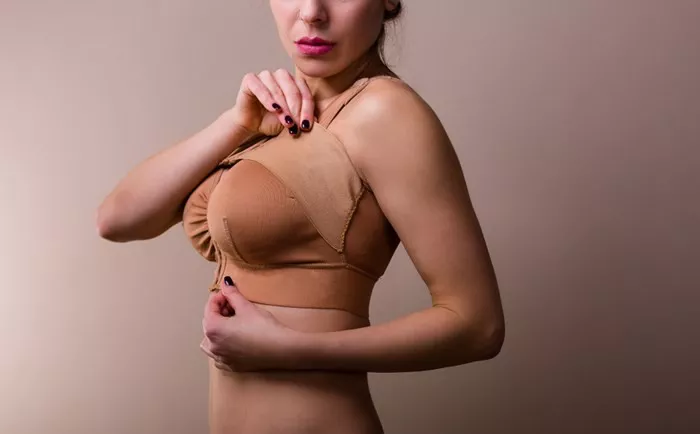Breast augmentation is a popular surgical procedure that involves the placement of breast implants to enhance the size and shape of the breasts. While breast augmentation can provide long-lasting results, it’s important to note that over time, some individuals may notice changes in the position and appearance of their breast implants. One common concern is the phenomenon known as “breast implant dropping” or “implant ptosis.” In this comprehensive article, we will explore the reasons why breast implants may drop, the factors that contribute to this occurrence, and what can be done to address it.
Understanding Breast Implant Dropping
Breast implant dropping refers to the downward movement of the breast implant within the breast pocket over time. This can lead to a change in breast shape, position, and fullness. It’s important to note that breast implant dropping is a natural process that occurs due to several factors, including the influence of gravity, tissue relaxation, and the settling of the breast implants within the breast pocket.
Factors Contributing to Breast Implant Dropping
Several factors can contribute to breast implant dropping. Understanding these factors can help individuals make informed decisions and set realistic expectations regarding their breast augmentation results. Here are some key factors to consider:
1. Gravity
Gravity plays a significant role in breast implant dropping. Over time, the natural downward pull of gravity can cause the breast tissue and the breast implant to shift downward. The weight of the breast implant combined with the effects of gravity can gradually stretch the breast tissues and result in a lower positioning of the implant within the breast pocket.
2. Tissue Relaxation
After breast augmentation surgery, the tissues surrounding the breast implant need time to adjust and heal. Initially, the tissues may be firm and tight, holding the implant in a higher position. However, as the tissues relax and accommodate the implant, the breast implant may gradually descend to a lower position within the breast pocket. This relaxation of the breast tissues is a normal part of the healing process.
3. Size and Weight of the Implant
The size and weight of the breast implant can influence the likelihood of implant dropping. Larger and heavier implants tend to exert more pressure on the breast tissues, which may lead to a higher chance of implant descent over time. However, it’s important to note that implant dropping can occur regardless of the implant size, as it is influenced by various factors.
4. Breast Tissue Quality and Quantity
The quality and quantity of existing breast tissue can affect how the breast implant settles within the breast pocket. Individuals with limited breast tissue may experience more noticeable implant dropping due to the lack of natural support. Additionally, individuals with naturally sagging or less elastic breast tissue may be more prone to implant dropping.
5. Surgical Technique and Pocket Placement
The surgical technique and the placement of the breast implant pocket during the initial surgery can influence the likelihood of implant dropping. The pocket can be created either beneath the breast tissue (subglandular) or beneath the chest muscle (submuscular). The choice of pocket placement depends on various factors, including the patient’s anatomy and desired outcome. However, it’s important to note that subglandular placement may have a higher risk of implant dropping, as there is less natural tissue support compared to submuscular placement.
Addressing Breast Implant Dropping
While breast implant dropping is a natural occurrence, there are options available to address the changes and restore a more desirable breast appearance. Here are some potential solutions:
1. Breast Implant Revision Surgery
Breast implant revision surgery is a common approach to address breast implant dropping. During this procedure, the surgeon can reposition the implant within the breast pocket, adjust the pocket itself, or replace the implant with a different size or type. The specific techniques used will depend on the individual’s unique circumstances and goals.
2. Capsulorrhaphy
Capsulorrhaphy, also known as internal pocket tightening, involves suturing the existing capsule (the scar tissue that naturally forms around the breast implant) to provide additional support and lift to the implant. This technique can help correct implant dropping and restore a more youthful breast appearance.
3. Implant Exchange
In some cases, an implant exchange may be recommended to address implant dropping. This involves replacing the existing implant with a new one that has a different shape, size, or profile to achieve the desired lift and projection. By selecting an implant with a higher profile or a different shape, the surgeon can help improve the overall breast appearance and counteract the effects of implant dropping.
4. Combination Procedures
In certain situations, a combination of procedures may be recommended to address breast implant dropping. For example, a breast lift (mastopexy) can be performed along with implant revision surgery to reshape and lift the breasts, restoring a more youthful position and contour.
Conclusion
Breast implant dropping is a natural process that can occur over time due to factors such as gravity, tissue relaxation, and the settling of the implant within the breast pocket. While implant dropping may be a concern for some individuals, there are options available to address these changes and restore a more desirable breast appearance. Breast implant revision surgery, capsulorrhaphy, implant exchange, and combination procedures can all be effective approaches to correct implant dropping and achieve the desired lift and projection. It’s important to consult with a board-certified plastic surgeon specializing in breast augmentation to discuss your concerns, evaluate your unique situation, and develop a personalized treatment plan. With proper evaluation, understanding, and appropriate surgical intervention, you can achieve beautiful, natural-looking results that restore your confidence and satisfaction with your breast augmentation outcome.


